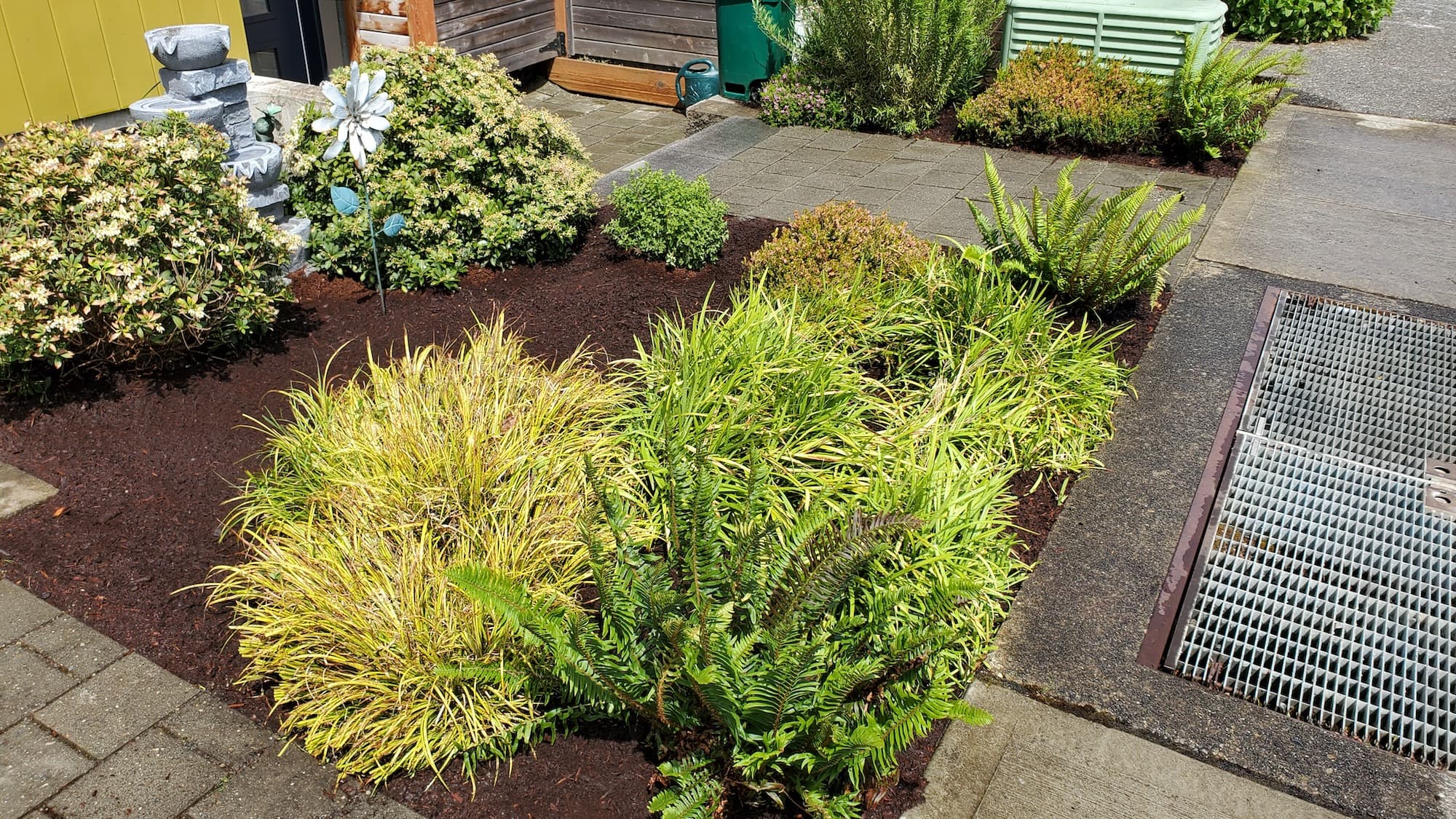White Center rebuild eroded slope contractor — Landscape Repair
Homeowner’s Issue
White Center gets a lot of rain and has a mix of clay and compacted fill soils that don’t drain well. That means slopes can rut, wash out, or push soil onto sidewalks and driveways after heavy storms. You’ll often see exposed roots, moss on shady banks, and invasive ivy or blackberry taking hold where native groundcover has been lost.
Local yards near Westcrest Park and the West Seattle ridge especially show the telltale signs: runoff channels, uneven terraces, and plants struggling where water pools. Sun exposure varies block to block — south-facing slopes dry faster, north-facing banks stay damp and mossy — so a one-size-fits-all fix rarely works. Homeowners want solutions that stop the erosion, make the yard usable again, and reduce maintenance time. That usually means improving drainage, stabilizing soil with deep-rooted natives, and adding surface protection like mulch or geotextile where needed. I’ve been repairing yards around White Center for 15 years, using sustainable methods that work with our climate rather than against it.
Our Quality Service
We rebuild eroded slopes using practical, low-impact methods suited to local conditions. We assess sun, soil, and runoff patterns, then design fixes that combine drainage work, plant-based stabilization, and mechanical measures where needed. Expect sustainable erosion control blankets, native shrubs and grasses, and carefully routed swales or French drains to move water away from the problem area.
Benefits:
- Safer, more stable slopes that reduce landslide risk.
- Better curb appeal and more usable outdoor space.
- Lower ongoing maintenance thanks to native plants and smart drainage.
What’s Included
- Site assessment and written plan.
- Grading and reshaping of the slope.
- Drainage solutions (French drains, swales, or outlet routing).
- Planting with native, deep-rooted species.
- Mulch, erosion control fabric, or biodegradable blankets.
- Clean-up and haul-away of debris (or green bin option).
Options / Upgrades:
- Mulch + fabric combo for high-traffic or high-runoff areas.
- Organic weed control and manual ivy removal (no herbicides).
- Haul-away vs. green-bin composting for removed material.
- Drip irrigation for new plantings.
Before & After / Expectations
Expect some noise and gear on site during workdays, plus temporary access needs for trucks or small excavators. We’ll protect walkways and limit disruption to your yard; larger jobs may need short driveway or curb access. After the rebuild, you’ll see immediate improvement in drainage and slope shape; plants will take a season or two to fully establish.
Care tips:
- Water new plantings regularly during the first two summers.
- Keep mulch topped up to suppress weeds and reduce surface erosion.
- Inspect outlets and swales after heavy storms and clear debris.
- Hand-remove ivy and blackberry before they re-establish strong roots.
FAQs
How long will the repair take?
Most residential slope rebuilds are 2–5 days on site, depending on size and access. Plant establishment takes several months.
Will you use herbicides?
No. We use sustainable, mechanical, and organic methods only — hand-pulling, smothering with mulch/fabric, and targeted organic controls if needed.
Do I need permits?
Some retaining walls and major grade changes may require permits. We’ll flag permit needs during the assessment and work with you on options.
What about drainage to the street?
We design outlets to existing storm systems or safe dispersal areas on your property, avoiding sending concentrated runoff onto sidewalks or neighbors.
Call to Action
If your White Center slope is washing out or needs a smarter long-term plan, book a free estimate. We schedule quickly, work reliably, and focus on lasting, low-maintenance results for Seattle-area yards near West Seattle and Highline. Email neatandtidyseattle@gmail.com to get started.










